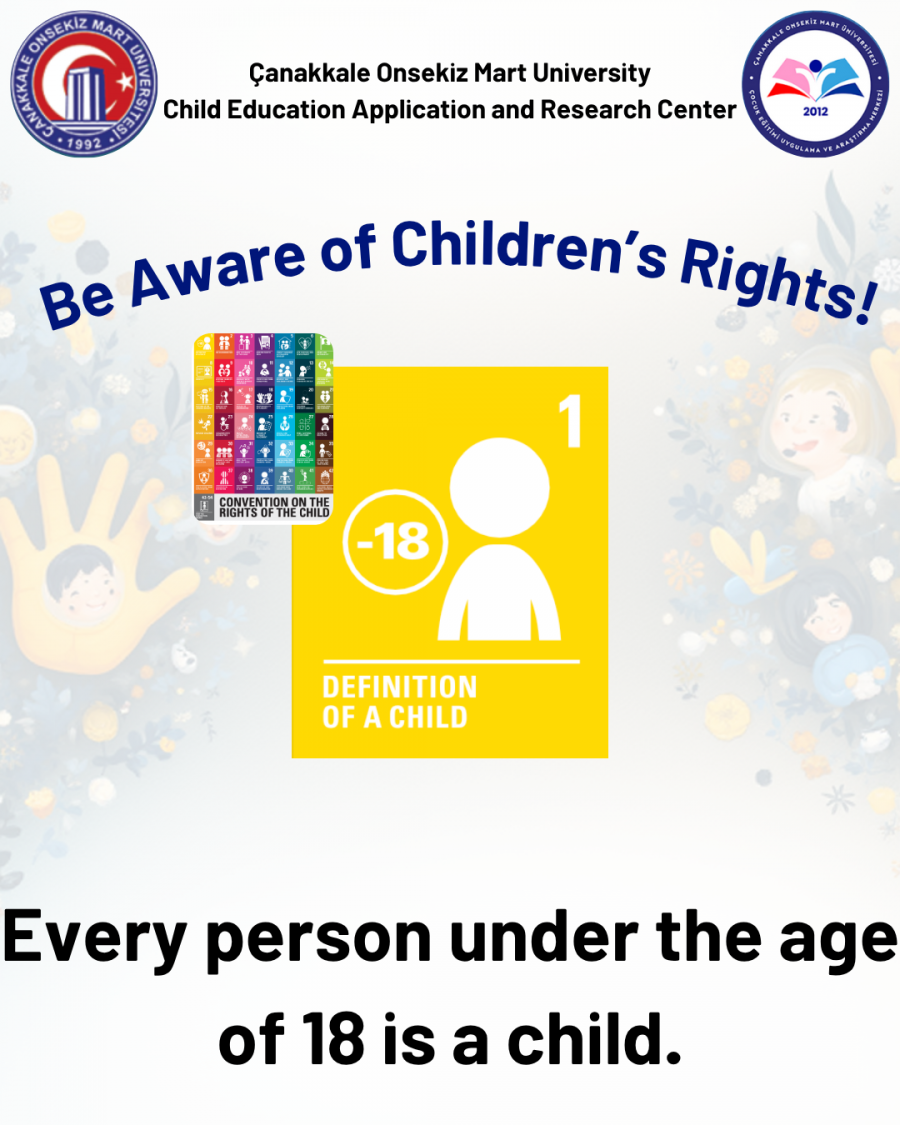


Article 1 of the United Nations Convention on the Rights of the Child draws a universal framework for childhood with a single statement: “Every human being below the age of 18 years is a child.” Yet, while the definition appears simple, it opens the door to a complex web of scientific, cultural, and social debates. Childhood is not merely a biological phase; it is shaped by society’s values, beliefs, family structures, and educational systems, constantly redefined through history and culture.
Throughout history, the concept of childhood has carried shifting meanings. In ancient times, children were often regarded as “small adults.” With the rise of modernity, they came to be associated with “innocence” and the need for protection (Erdiller-Yatmaz, Erdemir & Erbil, 2019). The industrial era and the development of schooling reframed childhood as “an investment in the future adult,” where children were molded according to adult expectations and social ideals. In contrast, today’s childhood studies view children not as becomings, but as beings—active participants in society as they live and grow (Kaya & Öcal, 2025; Dündar-Zeypak, 2021).
This shift prompts us to reconsider children’s rights beyond protection, emphasizing their participation and expression. As Aksoy-Kumru and Yılmaz (2024) argue, childhood should be redefined through the lenses of agency, competence, and participation. Having a voice in their own lives is not a privilege granted to children but a fundamental right they inherently possess.
“I love being a child because I can still dream.”But how do children define themselves? In Bacon and O’Riordan’s (2023) study, some children described themselves not as “children” but as “young people” or “almost adults.” This shows that childhood is connected to social position and self-perception as much as age. Some children resist being seen as “small,” while others value the freedom, imagination, and curiosity that come with being a child. As one participant expressed: From a child’s perspective, childhood often means curiosity, play, learning, and emotion. In Harcourt’s (2011) research, children remarked, “Adults know more, but children feel more,” highlighting the depth of children’s emotional and experiential worlds. Templeton (2020) analyzed children’s photographs of city spaces and found that children often viewed streets not as transitional spaces, but as “the road that takes you home.” Colliver (2017) refers to this perspective as “a shift from listening to understanding,” reminding us that to truly understand children’s worlds, we must go beyond words to grasp their lived experiences.
From adults’ perspective, childhood is often seen as both fragile and formative—a time to be protected yet shaped. Toran and Hacıfazlıoğlu’s (2020) research in Türkiye revealed that parents associate childhood with morality, respect, and discipline, while teachers see children primarily as future adults in preparation. Such views, while emphasizing care, risk overlooking children’s present voices and experiences. For children, however, the present moment is central; childhood is not a waiting room for adulthood but a meaningful phase of life in itself.
Article 1 of the Convention, therefore, is more than a legal definition—it is a call for recognition and respect. Seeing childhood not as a fixed age category but as a dynamic social identity shaped through relationships allows us to uphold children’s right to be seen as full subjects. This perspective reminds us that children deserve not only protection but also to be heard, understood, and included in decisions that affect them.
Today, the concept of childhood is being reimagined globally. Children are no longer just the promise of the future; they are the thinkers, feelers, and changemakers of the present. Hence, Article 1 of the Convention entrusts us all with a shared responsibility:
To recognize every child’s presence, voice, and experience.
Dr. Sezen ÇİÇEK APAYDIN
November 7, 2025